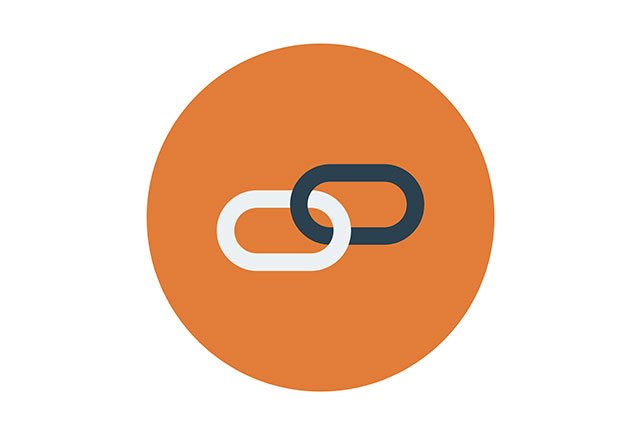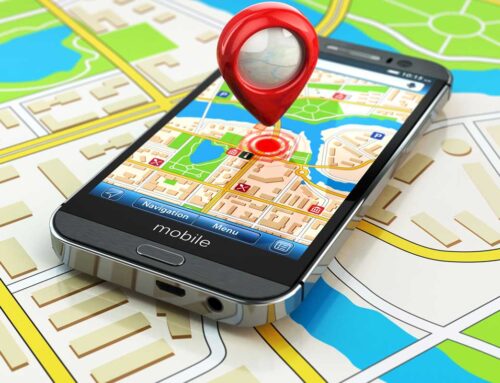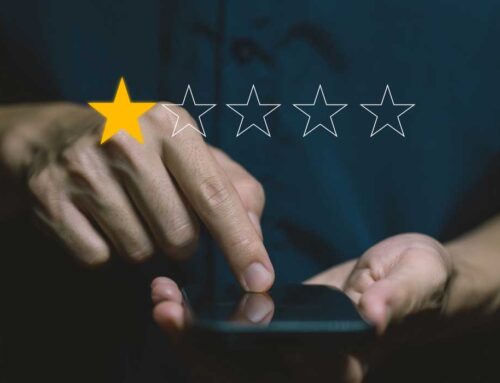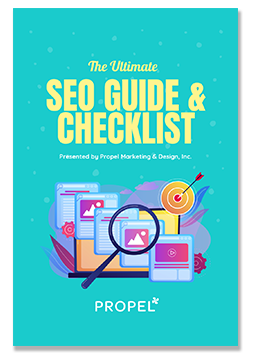One of the most important factors in SEO (search engine optimization) is building a strategic linking campaign. We often go over the importance of linking to other websites from your webpages and how to get relevant, trustworthy websites to link back to you (backlinking), but internal linking is also a ranking factor and should not be overlooked.
Let’s discuss:
- What internal linking is and why it’s important
- How to create a solid internal linking strategy
- How link building will affect your SEO campaign
What is internal linking?
Internal linking occurs when a webpage links to another webpage within the same domain. So, when you have a link on one of your webpages that sends your visitor to another webpage on your site, you’ve created an internal link.
But why is this an essential aspect of SEO?
Not only do internal links give your users easy access to understand and navigate your website, but they also tell Google:
- Your site’s hierarchy (the more internal links to a page, the more important it appears to be)
- What’s on the page
- How to index your site
- The page’s value
- The relationship of pages within your site
- If it should provide the page as a result of a user’s query
When done correctly, internal linking gives your visitors and the search engines the ability to find the content they’re looking for on your site, which creates a better user experience (UX). UX is a top goal for every website. In fact, Google has made UX a ranking factor, so it’s a must when it comes to your SEO campaign.
Note that if you don’t have a link to a page, Google has no way of ever finding it; therefore, it will never show up in a search result.
How does Google use your links?
When Google heads to the homepage of your website, it crawls your page (basically, it’s “reading” it), and it follows the links provided. In doing so, it’s figuring out what your pages will offer searchers. It’s learning about your content and what pages work together.
It’s important to know that not all links are created equal. That’s right; some are more valuable than others. In most cases, the homepage offers the greatest link value because it usually has the most backlinks.
So, how do you utilize this knowledge? Say you write a weekly blog post, if you link to the new post from your homepage, Google will find it faster, give it a higher level of importance, and make it easier to offer it up as a result of a user’s query. You may not have the time or ability to link to every new post from your homepage on a weekly basis, that’s okay. But, you should absolutely have a link to the blog, as this will help, too.
The more links you have to a piece of content or a specific page, the higher value it has to Google and the more likely it will show up on the SERPs (search engine results pages).
You may be wondering if there’s such a thing as external linking since we have internal linking. Yes, there is. An external link is a hyperlink that takes the user to another website. These links are very valuable to your SEO strategy, as well.
How do I create a successful internal linking campaign?
There are various ways to ensure your mastering your internal linking campaign. Of course, your navigation bar is vital. This part of your expertly designed homepage is going to hold several links that provide visitors and search engines intel on the content of your site and how to get to it.
Anchor text
However, within your content, you should also provide anchor text that sends users (and Google) to pages that are relevant. What’s anchor text? When you see a piece of content that has a link within it, this is anchor text.
The link describes where it will take the user using keywords. The text should seamlessly keep the momentum of the content but tell the user everything they need to know about the page they’ll go to should they click the link within the text.
Pro tip: never use the exact same anchor text for different pages, be specific, so all parties know where they’re going and what they’ll get when they get there.
Link to pages that matter
As noted above, the more links to a page, the more value the page will be given (the more likely to be seen by Google and given as a result on the SERPs). So, if you want your page to be a result, link to it well and link to it often.
We’re not telling you to be spammy or provide links that bear no relevance to the user’s intent. Make it a smart, thoughtful link that generates a positive UX.
Link placement
With attention spans dwindling, using your links quickly on your pages will help users find what they’re looking for faster.
For example, if you’re writing a blog post on the types of chiropractic services you offer, the first time you mention back pain, you may want to provide a link to learn more about that specific condition you treat. Don’t wait until the third or fourth mention of it. The higher the link, the better, as it helps the user get to where they want to go without the need for further reading or research.
Doing this can also help keep your bounce rate low (when a visitor leaves your page without taking any action you want them to) and your dwell time high (the amount of time a user stays on your website). Both of these are indicators to Google of your site’s performance.
Audit your links
Who doesn’t love an audit? In this case, it’s a good one. Use the “Links” section of Google Search Console to learn about your internal links’ performance. You may be surprised to find that more important pages aren’t getting the amount of internal linking you thought, and pages that don’t hold much value to you have loads of internal links.
This is a great way to determine what pages you can give some attention to and ensure Google takes notice of them.
Link quantity
There isn’t an established number of links that will make or break your linking campaign; however, Google will crawl hundreds of links on a page if they’re there. That said, too many links can look spammy and give a bad UX.
Use your links responsibly (when they make sense) and wisely (in the right places) and you’ll give your users the experience they want as you provide them with necessary, relevant information through other pages.
Broken links
It’s vital to your link strategy that you ensure all your links are good ones. This means, take care not to have links up that take users to pages that no longer exist (404 error page messages will be given). These links are called broken links and they will devalue your page’s authority and generate a bad experience for your users.
You can fix broken links easily in one of two ways:
- Reestablish the deleted page with the same URL
- Redirect the deleted page to another relevant URL
The takeaway
Internal linking is a valuable resource that you have complete control over. It’s an easy SEO win and gives your users a better experience on your site. When users enjoy spending time on your site, Google knows and rewards you.
Link building is a smart SEO strategy that pays off. Do you want to learn more? Contact us today so we can discuss your SEO campaign.






![How to Write a Professional Chiropractic Bio [Template Included]](https://propelyourcompany.com/wp-content/uploads/write-a-bio-500x383.jpg)

